May: All things fresh and beautiful
Frontenac State Park Association newsletter
Vol. 2, No. 5, May 2024, Pam Miller, editor
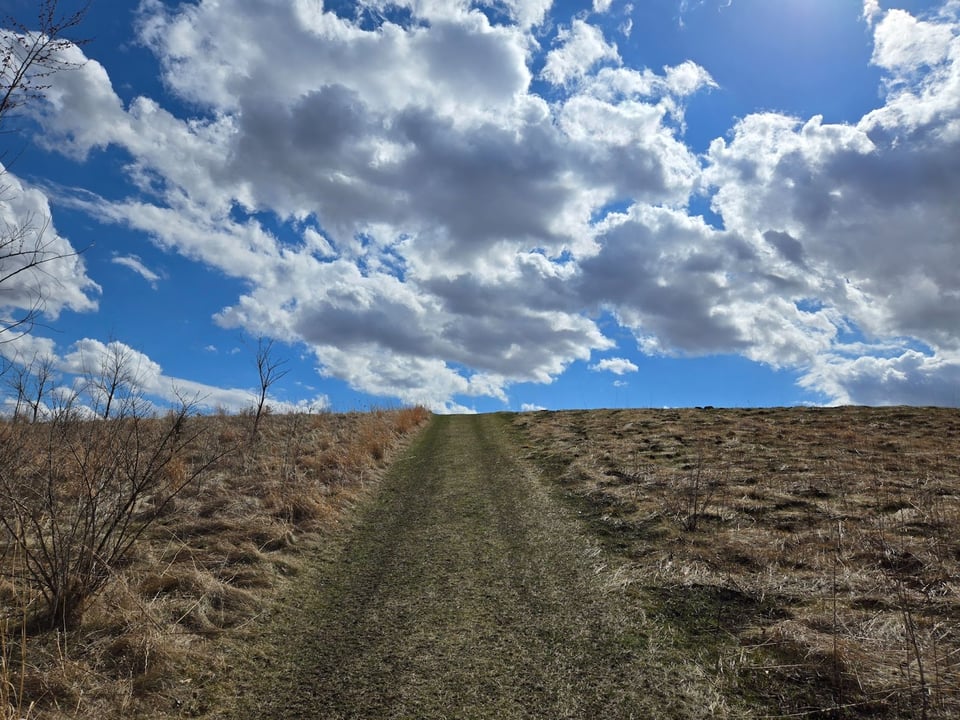
May: All things fresh and beautiful
How long we have waited for this time of year—May, when all things are being born, blooming, amazing us with their fresh beauty. Yay, May! And of course, it is a major month at Frontenac State Park, as visitors pour in to walk the prairie and woodland trails in search of the beautiful reassurances of spring. And we, your friends in the Frontenac State Park Association, are up to lots of good. Here are some of the things you’re invited to in May and June:
Saturday, May 4, 8-10 a.m.: Guided bird walk led by campground greeter Carole B., leaving from her campsite near the shower building. Carole’s walks are for more experienced birders. Bring binoculars.
Saturday, May 4, 9-11 a.m.: Guided bird walk with FSPA members Janet Malotky and Steve Dietz, leaving from campground kiosk.
Saturday, May 11, 8-10 a.m.: Guided bird walk led by campground greeter Carole B., leaving from her campsite near the shower building. Carole’s walks are for more experienced birders. Bring binoculars.
Saturday, May 11, 10-11:30 a.m.: Guided fungi habitat walk with FSPA member Pamela Miller, leaving from campground kiosk.
Tuesday, May 14, 10-11 a.m.: Nature Explorers: A new one-hour activity program for preschoolers with interpretive naturalist Sara Holger. May’s topic is birds. Meet at the main picnic shelter.
Thursday, May 16, 3-4:30 p.m.: Quarterly FSPA meeting, main picnic shelter. All are welcome.
Saturday, May 18, 8-10 a.m.: Guided bird walk led by campground greeter Carole B., leaving from her campsite near the shower building. Carole’s walks are for more experienced birders. Bring binoculars.
Saturday, May 18, 9 a.m. - 12 p.m. Join Great River Greening at Frontenac State Park. Volunteers will support early-stage restoration work on a recently acquired new addition to the park. This event will feature lopping and hauling of invasive shrubs to set the stage for continued restoration work and potential trail development. Activities will include lopping buckthorn or other invasive shrubs, hauling woody material and stacking the biomass for future process. More information and registration here.
Saturday, May 25, 8-10 a.m.: Guided bird walk led by campground greeter Carole B., leaving from her campsite near the shower building. Carole’s walks are for more experienced birders. Bring binoculars.
Saturday, May 25, 8-10 a.m.: Guided bird walk with FSPA members Janet Malotky and Steve Dietz at Hok-Si-La Park just north of Lake City. Meet in the Hok-Si-La parking lot.
Saturday, May 25, 9-10 p.m.: Nature walk with interpretive naturalist and FSPA member Bruce Ause, leaving from campground kiosk. His first of the summer!
Sunday, May 26, 11 a.m.-1 p.m.: Raptor program with Jackie Fallon, outside park headquarters (as weather allows).
Saturday, June 8: Free park entry day; FSPA will have a welcome table from 11 a.m. to 2 p.m. at the main picnic shelter.
Saturday, June 8, 9-11 a.m.: Guided bird walk with FSPA members Steve Dietz and Janet Malotky, leaving from campground kiosk.
Saturday, June 8, 10-11 a.m.: Nature walk with interpretive naturalist Bruce Ause, leaving from campground kiosk.
Tuesday, June 11, 10-11 a.m.: Nature Explorers: Wildflowers, for preschoolers, with interpretive naturalist Sara Holger, main picnic shelter.
Saturday, June 15, 10-11 a.m.: Nature walk with interpretive naturalist Bruce Ause, leaving from campground kiosk.
Saturday, June 15, 10 a.m.-noon: Ranger Jake Gaster leads a walk-and-talk on post-fire ecology, leaving from campground kiosk.
Saturday, June 22, 9-11 a.m.: Guided bird walk with FSPA members Steve Dietz and Janet Malotky along Prairie Loop Trail, leaving from park headquarters.
Saturday, June 22, 10-11 a.m.: Nature walk with interpretive naturalist Bruce Ause, leaving from campground kiosk.
Saturday, June 29, 10-11 a.m.: Nature walk with interpretive naturalist Bruce Ause, leaving from campground kiosk.
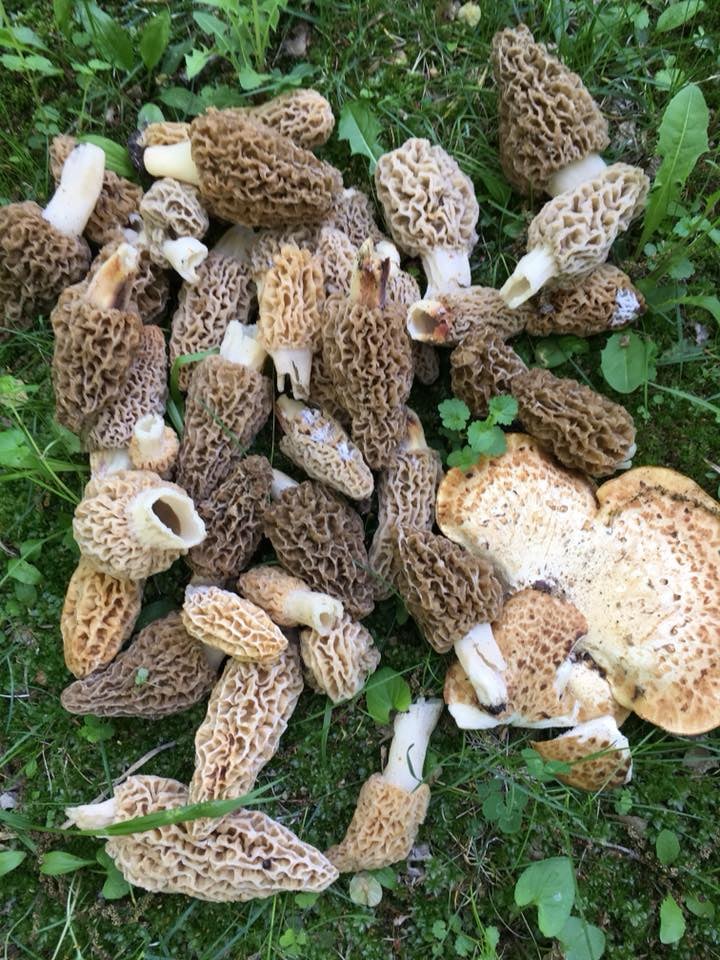
Other things to know
Our trusty lead ranger, Jake Gaster, provided these tidbits of park information for May:
Park road construction: During the month of May, there will be road construction along County Road 28, the main road into and out of the park. Work will begin around May 8 and be completed by Memorial Day weekend. There will be individual lane closures but the road will remain accessible for the duration of the project.
In the campground: The water is turned back on and all facilities are reopened, though there are still a few repairs to be made in the campground. As always, you can find more information about camping in the park and a guide to reserving a site here.
Our annual bird-loving campground host, Carole B., is in the campground all month on her annual warbler migration pilgrimage! She is a font of information for anyone interested in learning more about birding. You can find her camping in the overflow campsite near the dump station when she’s not out birding (which is most of the time).
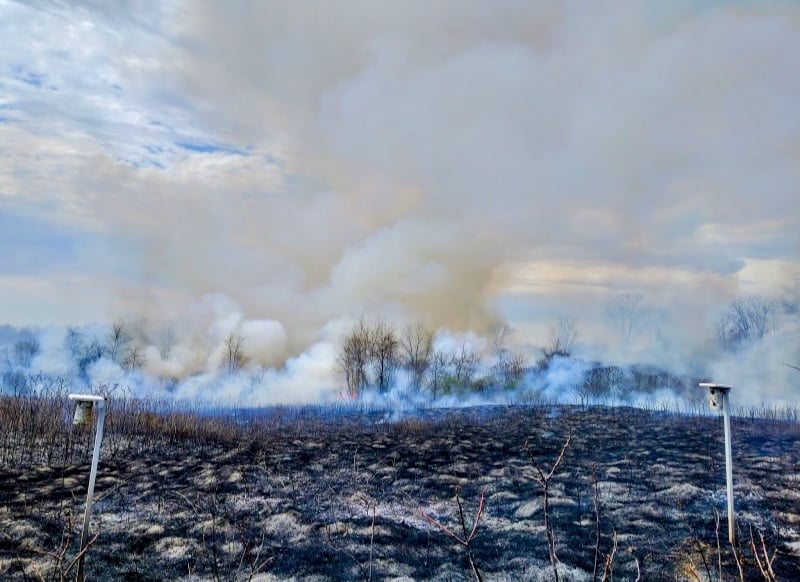
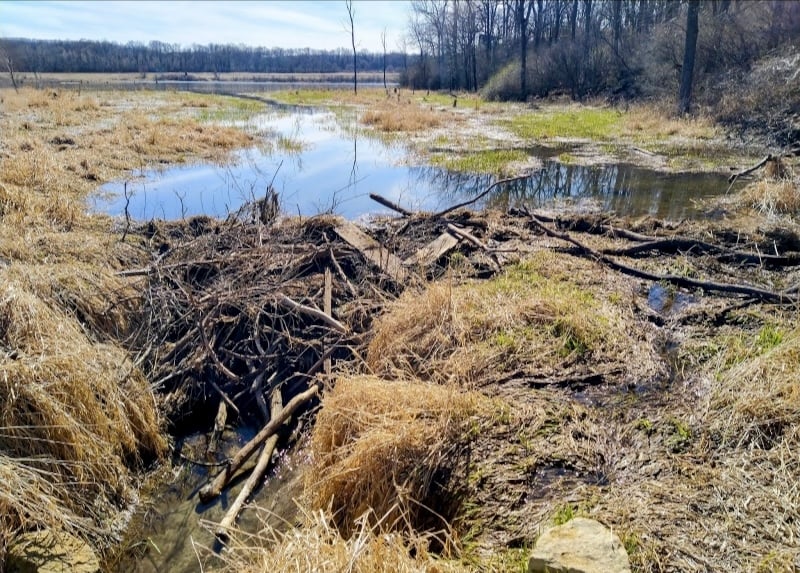
The great Sand Point Trail cleanup
Every April, FSPA members put on their grubbiest outfits (FSPA members specialize in such humble couture) and head out to clean up the Sand Point Trail woods and beach, mostly of @#$%! wind- and water-driven plastic and Styrofoam debris washed in by spring floods. This year, about 25 FSPA members and our friends from Old Frontenac did one heckuva job of clearing the woods of truckloads of garbage. It helped that this spring did not bring a fresh flood, so we were able to catch up with many acres uncovered in previous springs. Here’s just SOME of what we dragged out!
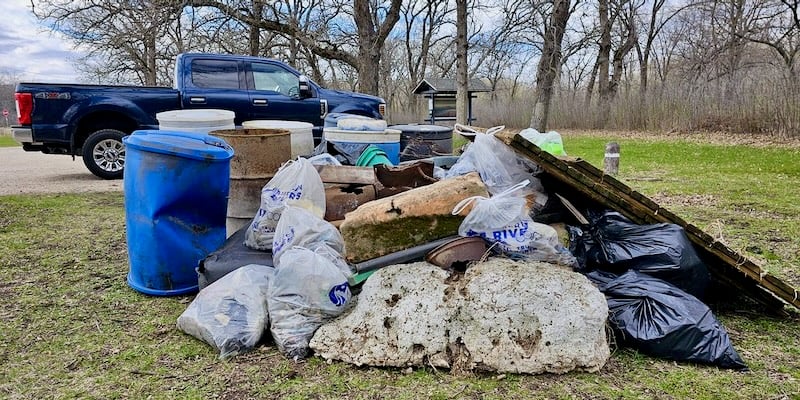
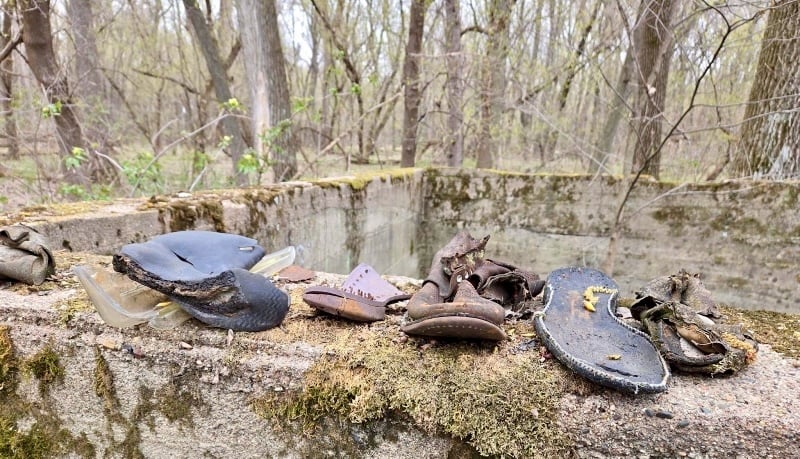
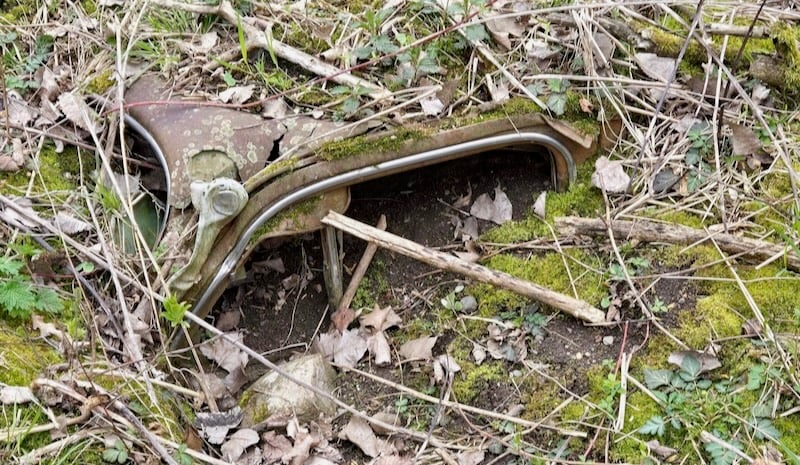
Restoring the wildlife blind habitat
A small but mighty contingent of FSPA members recently tackled another much-needed project, clearing mostly Morrow’s honeysuckle and other invasives around the wildlife blind on the Pleasant Valley Lakelet (Frontenac Pond) trail. That’s not easy work! Thank you, volunteers! With a grant from the Parks+Trails Council, the cleared area will be planted with native seeds and plants in May.
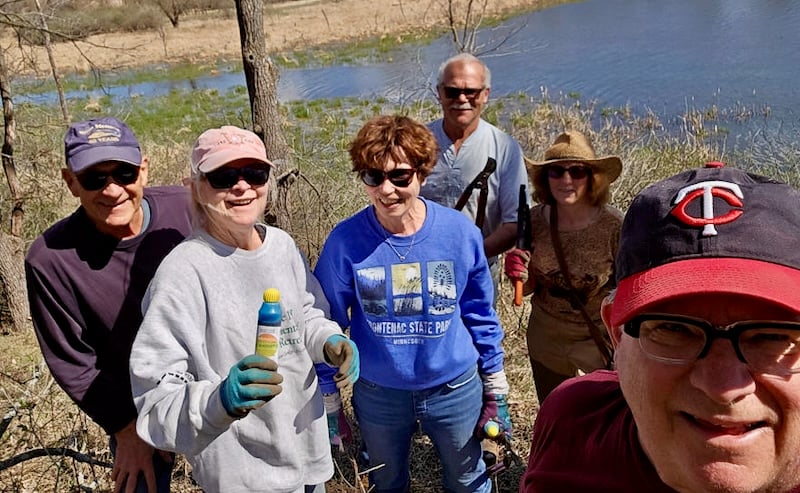
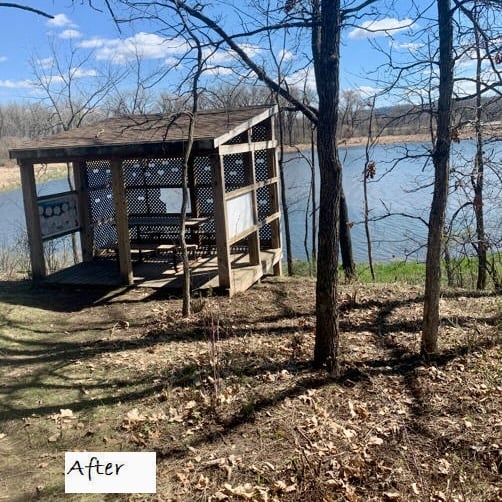
Reaching out to our Hispanic neighbors
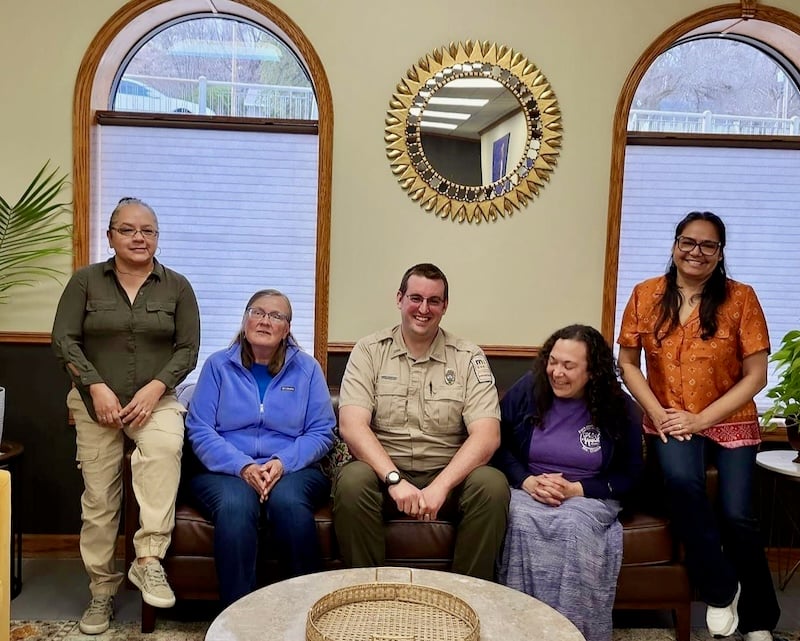
One fish, two fish, dead fish, WRONG FISH
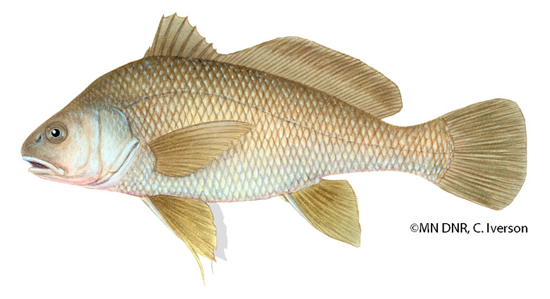
Oh, for heaven’s sake. Many of you (very politely, we must say) pointed out that in our April newsletter, we incorrectly identified a fish dropped onto a park trail by a raptor as a bass. It wasn’t. It was a sheepshead, or freshwater drum (Aplodinotus grunniens), common in the Mississippi River/Lake Pepin, even routine on the end of your newsletter editor’s occasional highly amateur fishing pole. (In your newsletter editor’s defense, the fish was very dead, and thus not at its lovely best when we squinted at it to ID it.)
Every error is a learning experience, right? So here are a few tidbits about the humble little freshwater drum, a silvery little humpbacked, small-tailed fish, courtesy of the Minnesota Department of Natural Resources and the National Park Service:
Male freshwater drums rumble and grunt to attract mates. If you hold one, you can feel it vibrating like a cell phone.
The drum’s mouth is toward the bottom of its face. And it's the only freshwater fish on which the lateral line, a sense organ used to detect motion in the water, runs right through its tail.
The drum feeds on many different things, from crustaceans to minnows to aquatic insects to seeds. It uses its high snout and forehead to flip over stones and expose food.
Freshwater drums have particularly large otoliths, stonelike objects (granules of calcium carbonate) found in many creatures’ ears. They help the drum stay vertical in the cloudy (muddy or sandy) water it favors. Native Americans strung together the rather pretty drum otoliths in necklaces or bracelets. (As a kid, your newsletter editor had a stash of them. Why? Why not?)
There is some scientific indication that this fish, with its big molar-like crushing teeth, may be learning to eat invasive zebra mussels. Now there’s something to hope for!
Good to eat? Some say yep, but its flavor can depend on what the drum itself was eating. Here’s a recipe.
Notes from the field: May flowers
Steve Dietz, Master Naturalist Volunteer
April showers, so the saying goes, bring May flowers. Spring also brings a host of ephemerals---delicate, woods-loving flowers that bloom before the trees and shrubs around them leaf out, completing their life cycle for the year almost before we have a chance to notice them.
As early-blooming flowers that produce nectar and pollen as well as seeds when they die back, spring ephemerals are an important food source early in the year for bees, butterflies and flies, which in turn are important food sources for migrating and arriving birds. As Rachel Carson wrote in Silent Spring, “in nature nothing exists alone.”
Fortunately, many of the spring ephemerals in the Park have been recorded on our iNaturalist project. A shout-out and a thank you to everyone who shared their love of these harbingers of a new season. (Click on the IDs for more information.) As you hike the park this month, look for some of these beauties tucked quietly away in the not-yet-full shade of the woods.
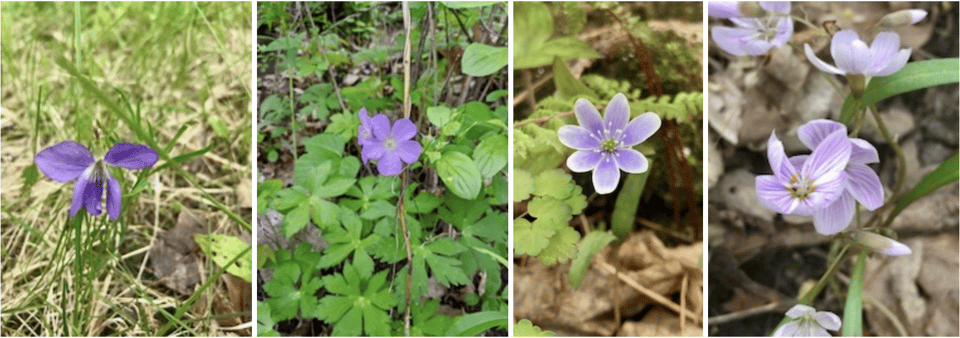


Bird note: Two little gems of migration
Janet Malotky, Master Naturalist Volunteer
Last May, FSPA put out our second newsletter. For that month’s Bird note, I wrote about warblers in the park. Now, approaching another May, I can’t resist doing so again.
Why? Because the spring migration, peaking for warblers in May, is thrilling in Frontenac State Park, for locals and visitors alike. This year though, instead of listing the many, many birds on their way to or through the park as you read this, I will focus on two amazing warblers that make you ask, “How have I never known about this bird?”
Our first little dazzler is the day-glo orange-throated Blackburnian Warbler, the only warbler with an orange throat. These are birds of the treetops, so to see them you’ll have to look up. Usually way up.
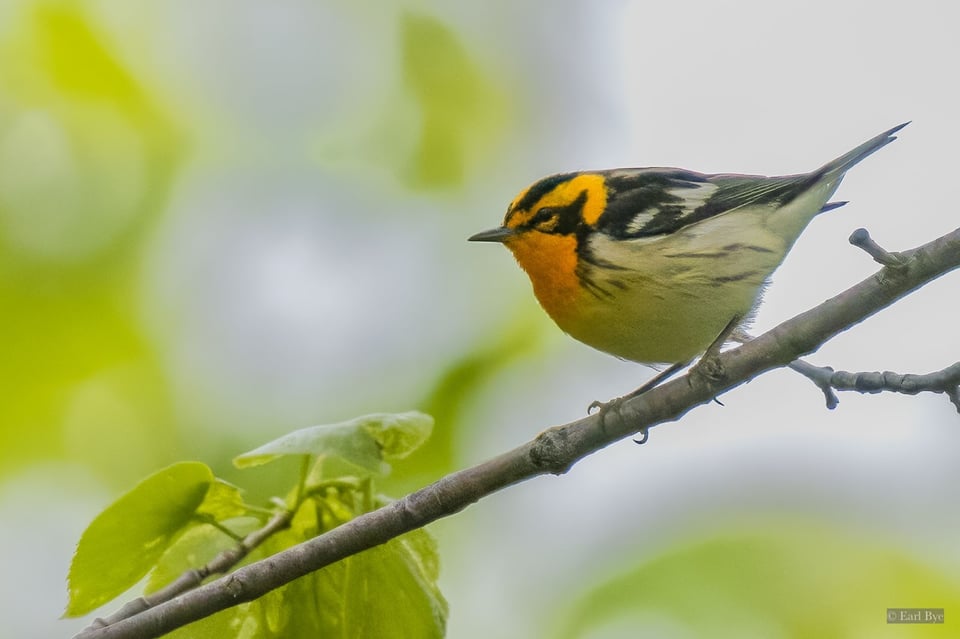
Blackburnian Warblers pass through FSP in May enroute to their breeding grounds in northern Minnesota, southern Canada, and around the Great Lakes. So we only get to see them for a brief time. They migrate all the way from their wintering grounds in South America. As uncommon and exciting as they are when they pass through our area, they seem as ubiquitous as Goldfinches on the slopes of the Ecuadorian Andes.
Since they don’t breed here, we’re not privy to their courtship or breeding behavior. When we see them, they are gleaning caterpillars and insects as fuel for the remainder of their flight north. They’ll eat a berry too, now and then, but like other warblers, Blackburnians don’t come to bird feeders. You’ll only see them in the treetops, especially tall spruces, but they’ll flutter about in all sorts of trees during migration.
Our second little jewel is the Magnolia Warbler, also winging through in May on its way to breeding grounds in the Arrowhead region of Minnesota, the Great Lakes surround, and much of Canada. They’re on their way up from Central America, Cuba, Puerto Rico, and some Caribbean Islands, where they spend the winter.
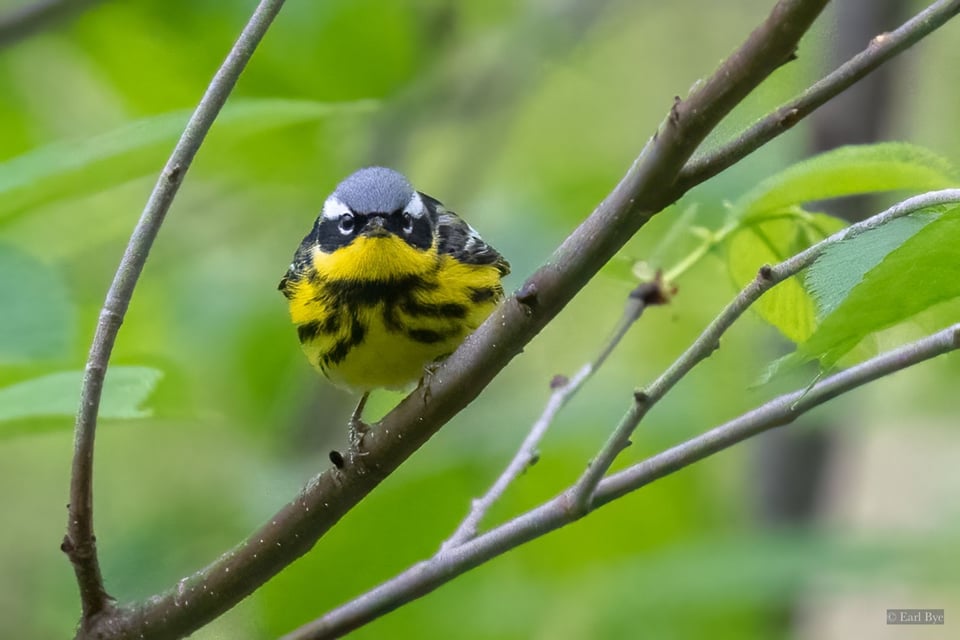
Magnolia Warblers hang out lower in the canopy, so they’re not as hard to see as Blackburnians. My jaw dropped when I first saw one in a bare shrub right in front of my face along the side of a walking path. They too are gleaning insects and caterpillars, refueling for the rest of their journey north. They are warblers, so they won’t come to your feeders either.
It’s easy to understand why seeing a Blackburnian or Magnolia Warbler is a thrill for folks interested in birds. Look at those fancy outfits and their chubby cuteness! The birds pictured here are males in full breeding plumage, so they’re as fancy as they get. The females of both species are more subtly clothed.
Blackburnian and Magnolia Warblers are only two of the many beautiful and fascinating birds that will be hopping around in the trees, shrubs, or on the ground over the next few weeks. Happy “hunting!
The beautiful birds of spring: A photo essay
Spring! It brings us so much joy and beauty, not the least of which comes with the spring migration to our area of amazing birds, some arriving for the warmer months, some just passing through to points north. Here are a few photos shared with us by three talented FSPA birders/photographers: Bruce Ause, Earl Bye and Steve Dietz. Enjoy!
Interpretive naturalist Bruce Ause has taken these photos through a few springs:
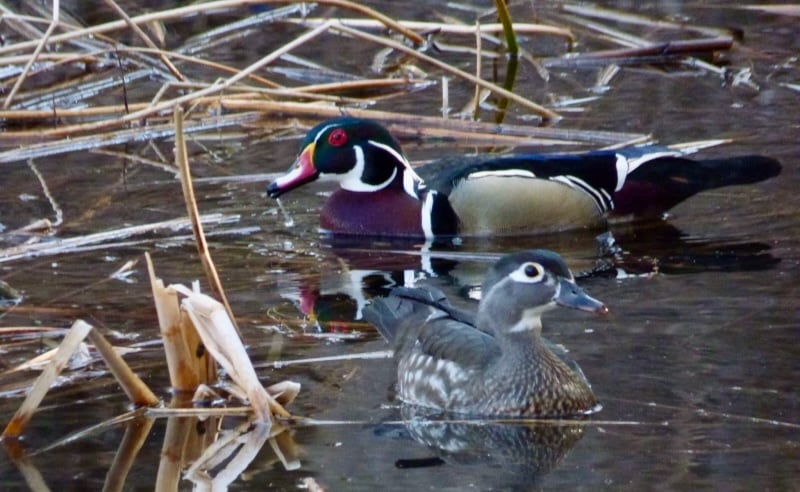
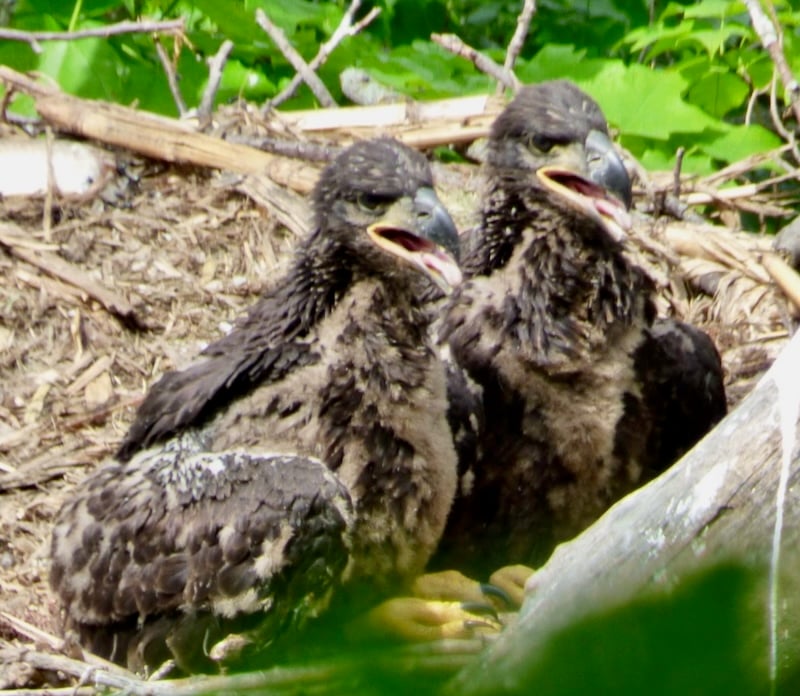
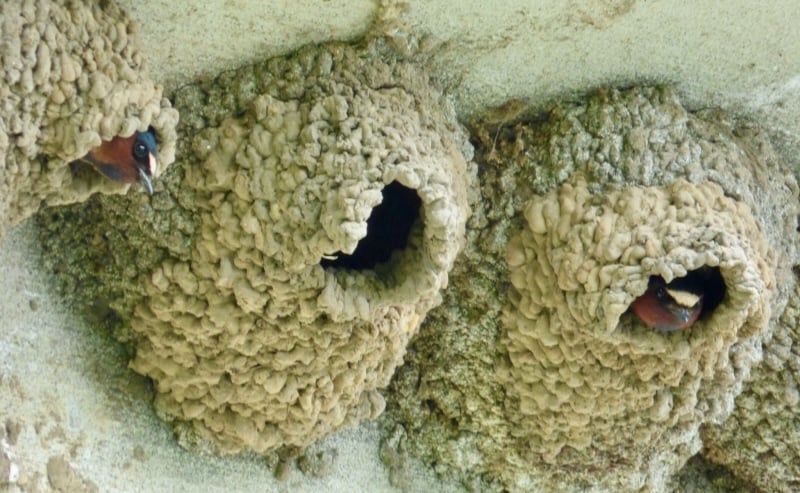
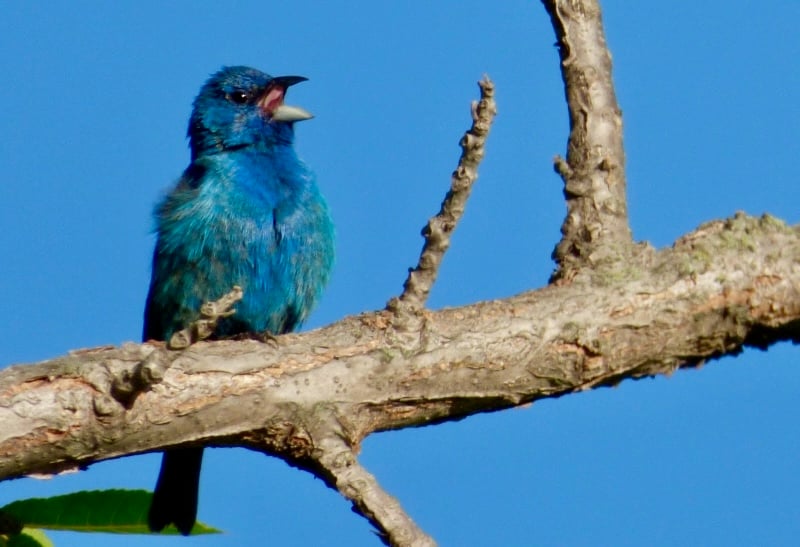
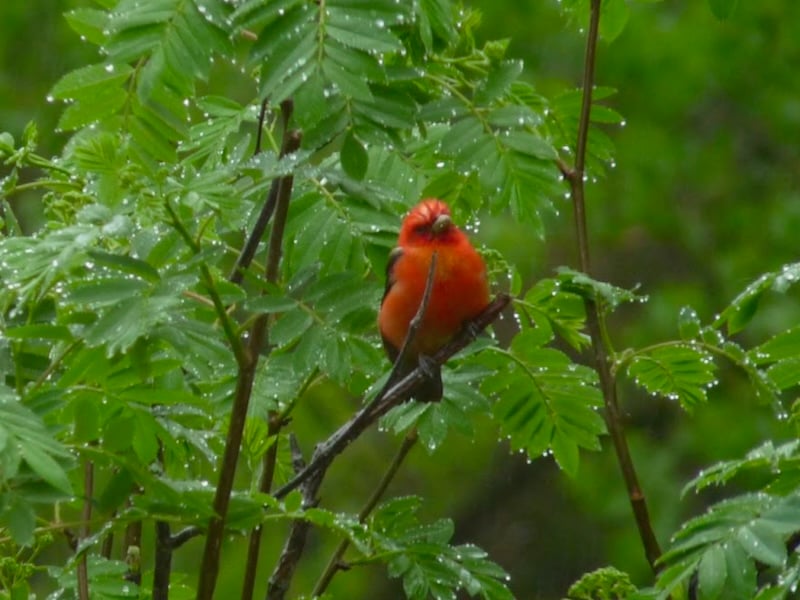
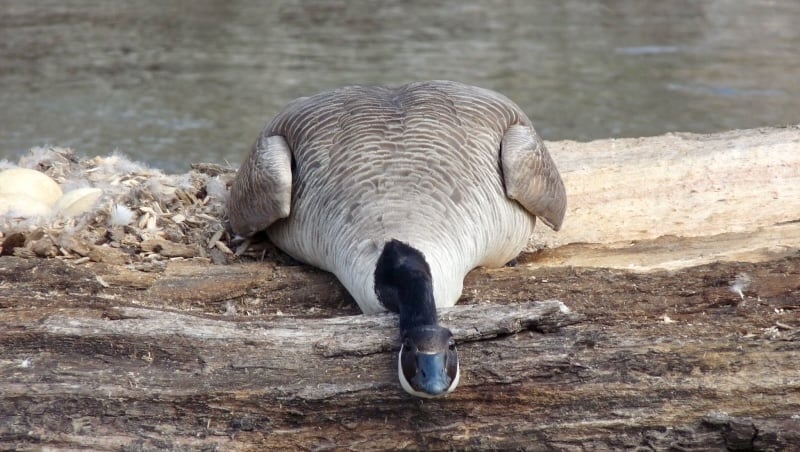
Earl Bye took these photos during a recent walk on the park’s remote Rattlesnake Bluff trail:
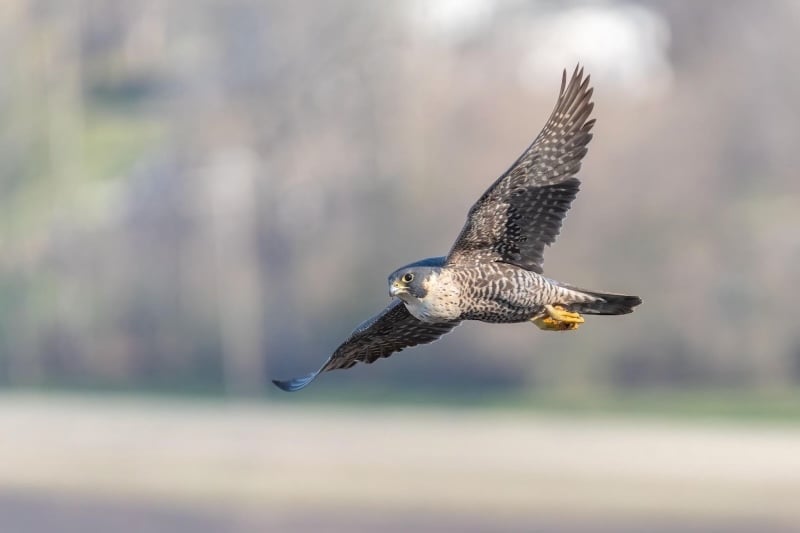
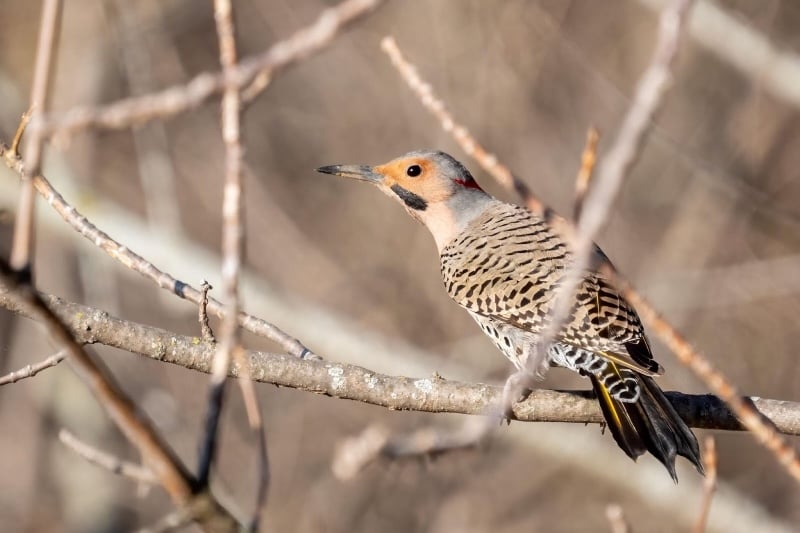
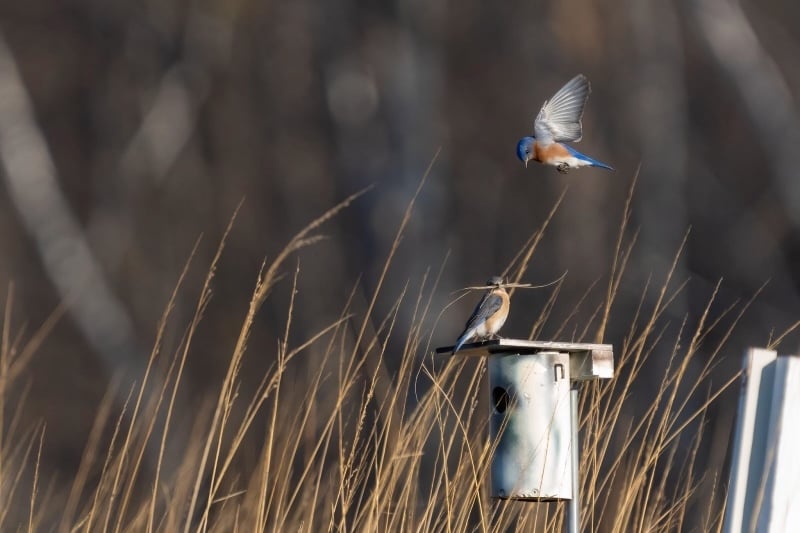
Minnesota Master Naturalist and FSPA chair Steve Dietz offered these photos from his spring birding adventures:
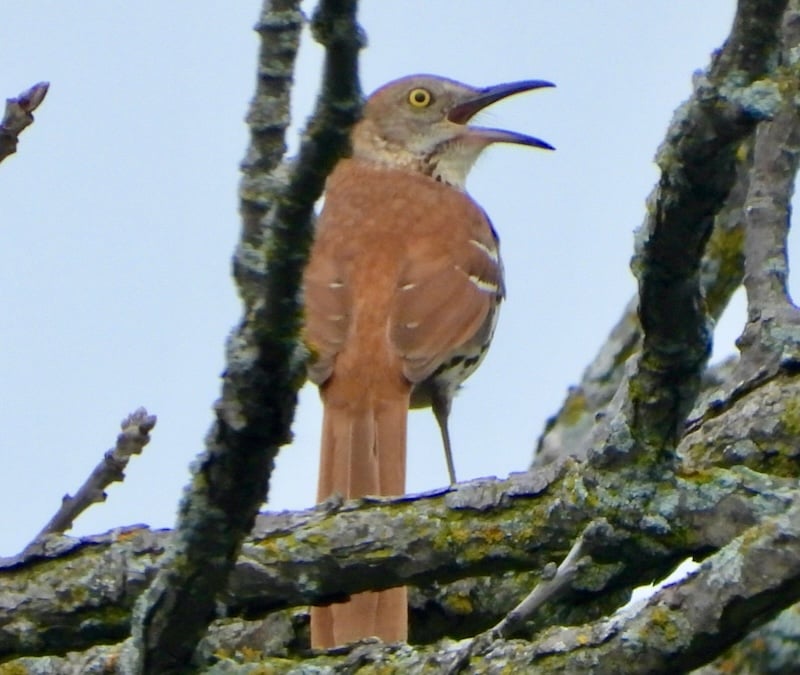
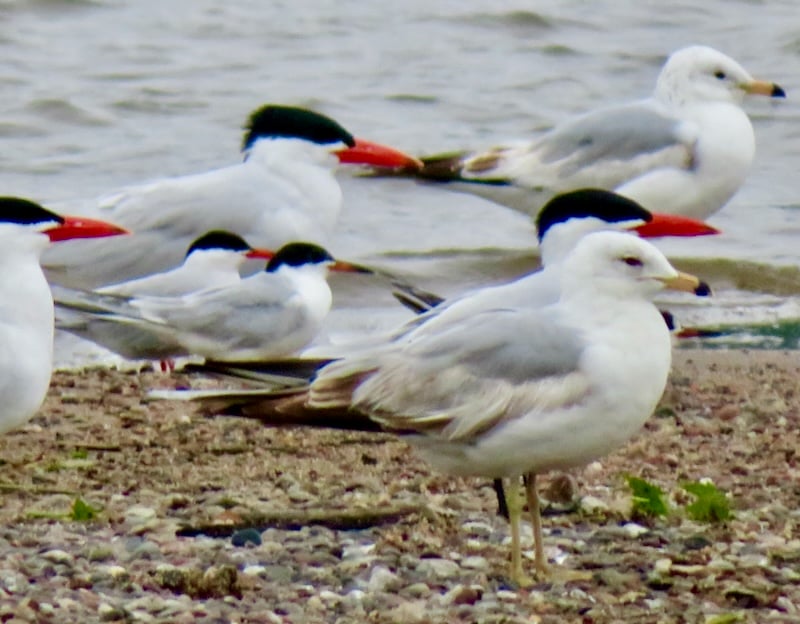
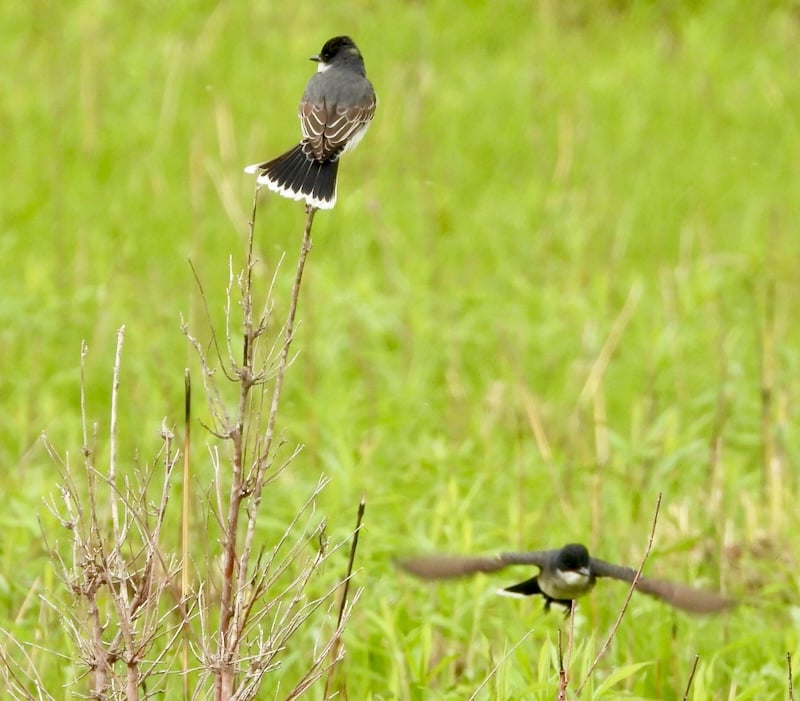
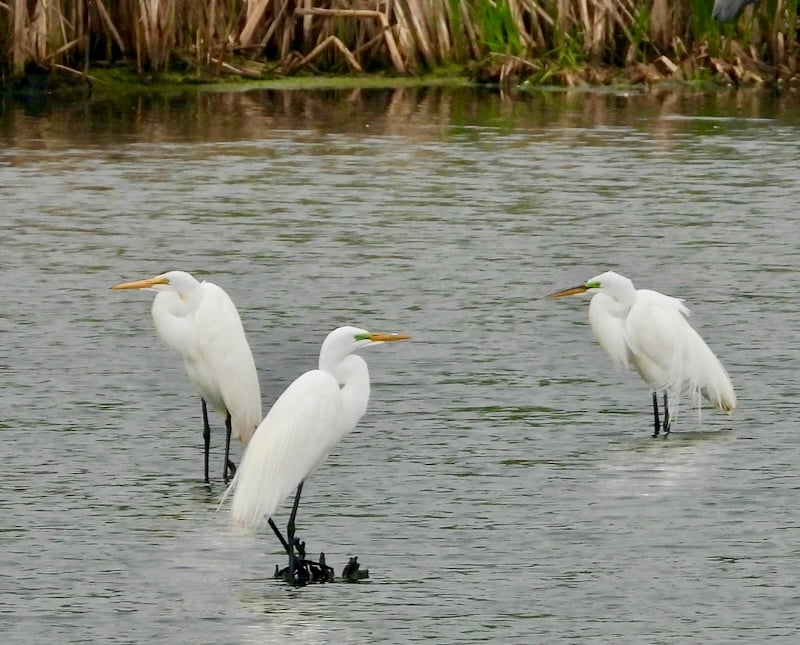
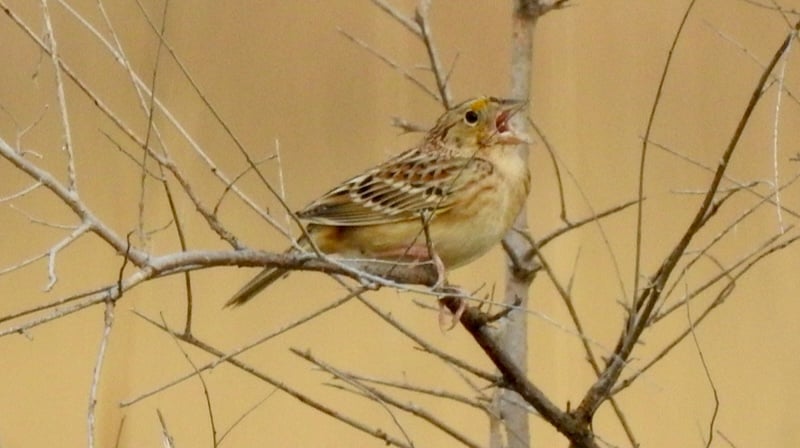
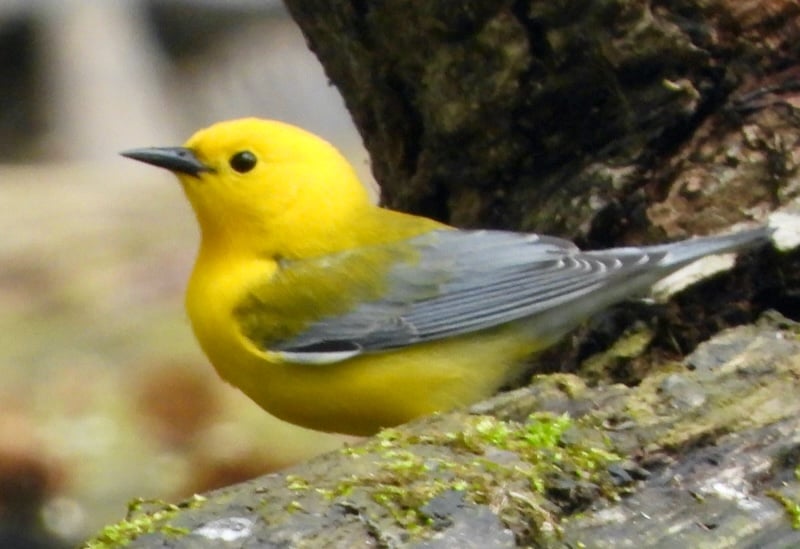
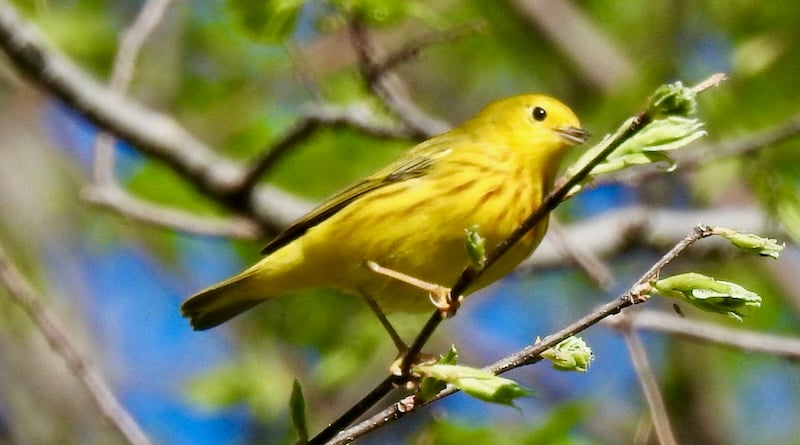
Poem of the month
“The Month of May”
By Wendy Cope (British; b. 1945)
Of the month of May, the merry month of May…
– Thomas Dekker (1572-1632)
The month of May, the merry month of May, We’d love to have your support (dues are $25 per year for an individual, $35 for dual/family membership). Here is a link. A reminder that joining us occasionally to help the park out with volunteer efforts is awesome too, even if you’re not a member. The FSPA’s goal is simply to share our love of Frontenac State Park with as many people as possible. To sign up to regularly receive this monthly newsletter, click on “Subscribe” below. Feel free to send questions or comments to your newsletter editor at pamelamarianmiller@gmail.com. Questions about the FSPA? You can reach FSPA chair Steve Dietz at stevedietz@duck.com. Frontenac State Park website Frontenac State Park Association website If you take pictures in the park, tag us on Instagram Frontenac State Park bird checklist Frontenac State Park on iNaturalist Website for our township, Florence Township Minnesota Master Naturalist program Red Wing Environmental Learning Center Lake City Environmental Learning Program on FB Jake Gaster, park manager; Amy Jay, assistant park manager; Amy Poss, lead field worker This is Volume 2, No. 5 of the Frontenac State Park Association newsletter, which was launched in April 2023. Here’s where to browse the full archives of this newsletter.
So long awaited, and so quickly past.
The winter’s over, and it’s time to play.
I saw a hundred shades of green today
And everything that Man made was outclassed.
The month of May, the merry month of May.
Now hello pink and white and farewell gray.
My spirits are no longer overcast.
The winter’s over and it’s time to play.
Sing fa la la la, I dare to say,
(Tried being modern but it didn’t last)
The month of May, the merry month of May.
I don’t know how much longer I can stay.
The summers come, the summers go so fast,
And soon there will be no more time to play.
So carpe diem, gather buds, make hay.
The world is glorious. Compare, contrast
December with the merry month of May.
Now is the time, now is the time to play.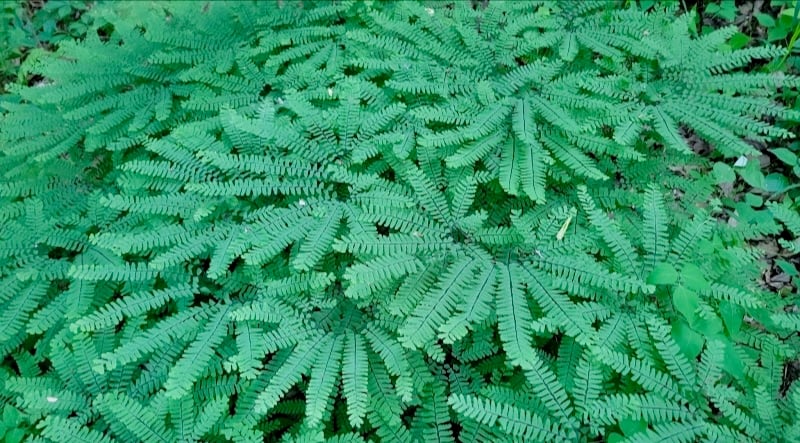
Interested in joining the FSPA?
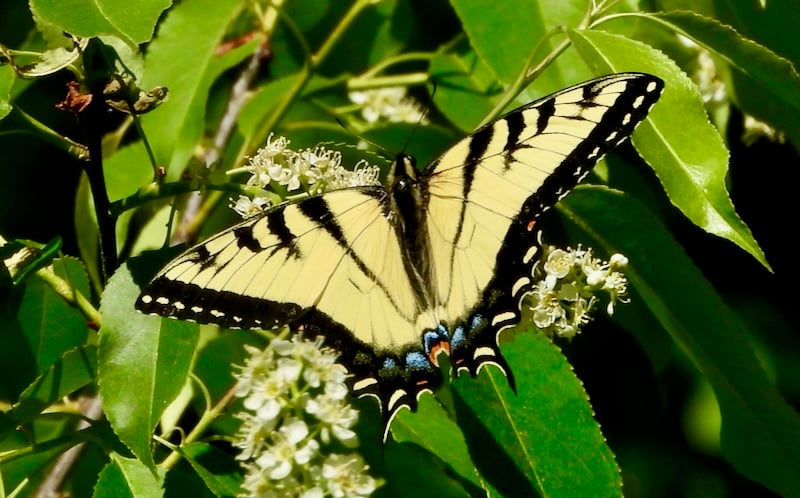
Handy links for more information and education
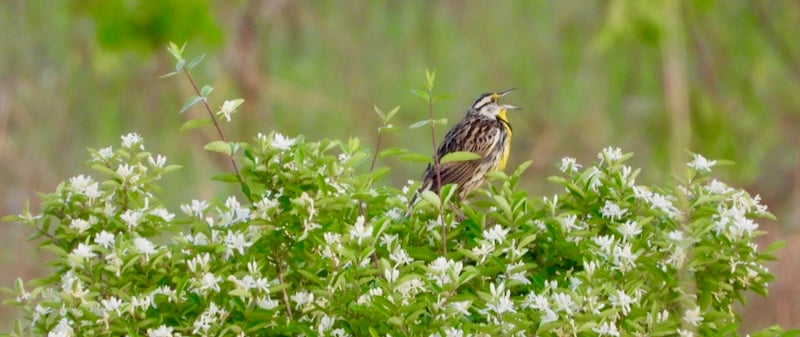
Frontenac State Park staff
Parting shots
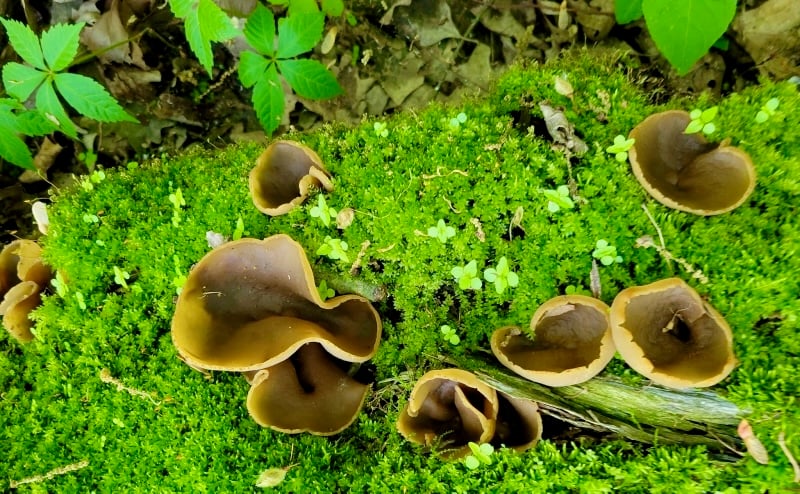
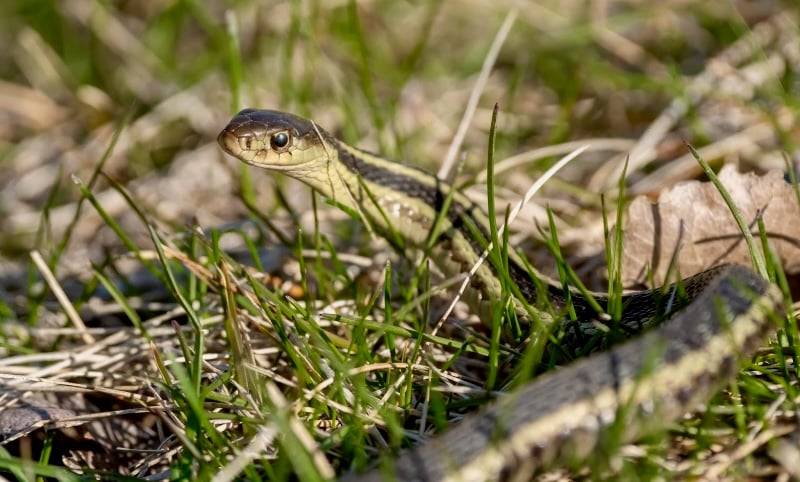
Thank you, readers and park visitors!